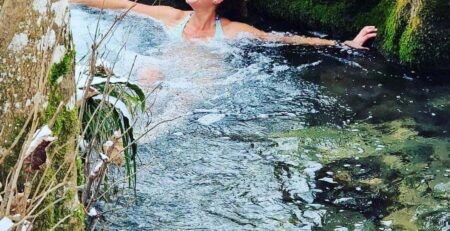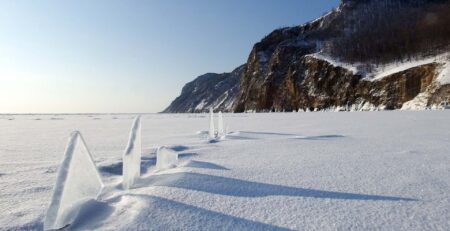Modern stress feels less like a lightning strike and more like a never-ending background hum. It’s the inbox that never empties, the traffic jam that never moves, the background worry that follows you to bed. This isn’t the sharp, life-saving stress of running from a predator. It’s a chronic state of “fight-or-flight” that drains your energy, clouds your thinking, and leaves your nervous system perpetually on edge.
The cold plunge doesn’t just offer relief from this feeling. It teaches your body how to handle stress better.
Table of Contents
The Hormetic Hijack: Teaching Stress a Lesson
At the heart of this transformation is the principle of hormesis: the phenomenon where a small, controlled dose of a stressor makes an organism stronger and more resilient. Cold plunging is a potent hormetic agent. You are voluntarily submitting to an intense, but brief and safe, physiological crisis.
When you step into that icy water, your body doesn’t know you did it on purpose It reacts with a primal, all-out alarm as if it’s under threat. Your sympathetic nervous system hits the gas pedal: your heart rate soars, and a surge of stress hormones like cortisol and norepinephrine floods your system. This is the “shock.”
But here’s what makes the plunge different: you are in control. You are choosing this. This conscious decision separates the experience from the unpredictable stresses of daily life. You are the one initiating the drill.
This is where the retraining begins. By repeatedly exposing yourself to this controlled stressor and—most importantly—successfully navigating through it, you are sending a powerful message to your brain and nervous system: “We can handle this. This intense feeling is temporary, and we have the capacity to move through it and return to calm.” Over time, this retrains your stress response; you become more resilient, not just in the cold, but in daily life too.
The Vagus Nerve Workout: Building Your Biological Brake
After the initial shock, your body begins to adapt. It shifts gears, activating the parasympathetic nervous system — your “rest and digest” mode. This is where the vagus nerve takes the spotlight. Acting like a biological brake pedal, it slows your heart rate, deepens your breathing, and restores balance.
Cold exposure is one of the strongest natural ways to strengthen vagal tone —a measure of how well your vagus nerve functions. High vagal tone is associated with better emotional regulation, a quicker recovery from stress, and a profound sense of calm.
As you sit in the cold, focusing on your breathing technique, and then as you step out of the ice bathtub and feel your body shudder and warm up, you are actively engaging this system. The plunge forces a powerful vagal response to counter the initial panic. With consistent practice, you are effectively strengthening your vagus nerve. You are building a more robust, responsive biological brake system that you can call upon not just after a plunge, but in the middle of a stressful work meeting or a difficult conversation.
The Chemical Afterglow: A Natural Antidote to Anxiety
What happens inside your body after a plunge explains why so many people describe feeling “high on life” afterward. The cold triggers a neurochemical reset that counteracts the effects of chronic stress.
- Norepinephrine: This isn’t just a stress hormone; in the context of a controlled plunge, it’s a clarity molecule. The surge sharpens your focus, pulling you completely into the present moment and away from the anxious chatter in your head. It’s a cognitive reset.
- Endorphins & Endocannabinoids: As your body warms up after the plunge, it releases these self-produced feel-good chemicals. Endorphins create a sense of euphoric relief, while endocannabinoids (the same type of chemicals found in cannabis) promote tranquility and well-being. This is the famous “after-drop glow”—a natural, drug-free state of peace that can last for hours.
Together, these changes help rebalance the brain chemistry that chronic stress disrupts, creating more resilience and emotional stability over time.
The Practice of Presence
Ultimately, the cold plunge is a brutal but effective form of mindfulness. In that ice bathtub, there is no past, no future. There is only the breath, the biting cold, and the unwavering focus on survival. It forcibly evicts the ruminating thoughts that fuel chronic stress. You cannot worry about a deadline while your entire being is focused on the simple, primal act of enduring and breathing.
The cold doesn’t ask you to meditate; it demands it.
With regular practice, you’re not only training your tolerance to cold; you are building a tolerance to psychological stress. You are teaching your entire organism that you can face intense discomfort, navigate it with intention, and emerge on the other side not just unscathed, but calmer, clearer, and more in control. This lesson translates directly into everyday resilience: you face pressure, navigate it, and come out calmer and stronger.
Final Thoughts
Cold plunging is more than a wellness trend; it’s a form of nervous system training. By voluntarily stepping into discomfort, you retrain your body and mind to handle real-world stress more effectively. You become less reactive, more grounded, and more in control of how you respond when life turns up the heat.
Explore More
- The Huberman Lab Podcast: Neuroscientist Dr. Andrew Huberman provides a deep dive into “The Science and Use of Cold Exposure for Health and Performance,” with specific explanations of its effects on dopamine, norepinephrine, and the stress response. (Available on all major podcast platforms).
- A Study on Autonomic Adaptation: Research like “Human physiological responses to immersion into water of different temperatures” demonstrates the shift from sympathetic to parasympathetic dominance after cold exposure, providing the scientific backbone for the “reset” effect.












Leave a Reply